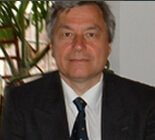Systems Engineering and Naval Architecture, National Taiwan Ocean University, Keelung, Taiwan
Email: jasoncheng19991220@gmail.com (H.D.C.); tom@mail.ntou.edu.tw (Y.C.T.)
*Corresponding author
Manuscript received April 10, 2023; revised May 10, 2023; accepted August 23, 2023; published April 8, 2024.
Abstract—This study investigated the absorption coefficient of a perforated plate under different design variables and discussed variable optimization. First, a perforated plate sample was printed using stereolithography (SLA) 3D printing, and the absorption coefficient of the sample at a 1/3 octave band was measured using an impedance tube. The design variables included the perforated plate's thickness, perforation rate, and aperture size. We used the Taguchi method for analysis to obtain the optimal combination of variables. The results showed that the perforation rate strongly affected the absorption coefficient in the frequency range of 500 to 6300 Hz. Additionally, the Taguchi method was used to analyze the experimental data because it could quickly find the factors with high influence and the estimated value of the optimal forecast combination.
Keywords—absorption coefficient, optimal perforation rate, perforated plate, taguchi method, 3D printing
[PDF]
Cite: Hao Dong Cheng and Yao Chi Tang, "Application of 3D Printer to the Production of Sound Absorbing Materials and Analysis of Absorption Coefficient Optimization by Taguchi Method," International Journal of Modeling and Optimization, vol. 14, no. 2, pp. 59-68, 2024.
Copyright © 2024 by the authors. This is an open access article distributed under the Creative Commons Attribution License which permits unrestricted use, distribution, and reproduction in any medium, provided the original work is properly cited (CC BY 4.0).


